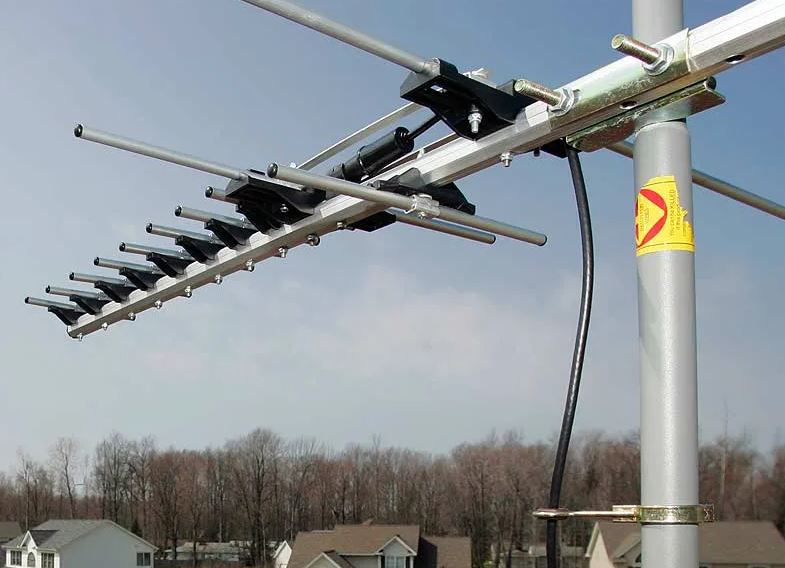Willing to know about how does Tv antenna work? Then you should first know what a TV antenna is and why it is helpful in our day-to-day life. Well, this article is all about the TV antenna benefits and how it works.
What is a TV antenna?
An antenna is designed to capture over-the-air broadcast signals from television stations as electromagnetic waves; then transforms these waves into electrical signals your television can use to decode.

Why should you consider a Tv Antenna?
There are multiple reasons you should choose a TV Antenna.
Saving Money: Many people opt for TV antennas because of their savings. Cable and satellite subscriptions are pricey; an antenna allows many channels at no additional cost.
Accessing Local Channels: TV antennas offer access to local news, sports, and programming from across a region that may not otherwise be accessible through cable or satellite providers. This could include regional programming such as news broadcasts.
Superior Picture Quality: Over-the-air broadcasts often provide better picture quality than cable or satellite services due to less compressed signals, producing more precise and detailed images.
No Reliance on the Internet: Streaming services require a stable and fast Internet connection to stream media content reliably; with an antenna TV system, you can watch all your favorite shows without worrying about data usage or Internet speed issues.
Emergency Preparedness: In times of disaster and emergencies, local over-the-air broadcasts can be an invaluable source of news and information. Purchasing a TV antenna ensures access to these broadcasts even if cable, satellite, or internet services become disrupted.
Accessing Subchannels: Many broadcast stations provide subchannels with additional programming that aren’t accessible through cable or satellite subscriptions but can still be reached with an antenna TV receiver.
See also: Best Outdoor TV Antenna For rural areas
Know how a T V Antenna Works in 4 Steps?
An antenna receives over-the-air broadcast signals from television stations through electromagnetic waves broadcast by their transmitting antenna and intercepts them for conversion into electrical signals.
Here is a step-by-step breakdown of how a TV antenna works:
- Receiving Signals: The antenna collects broadcast signals from television stations that use electromagnetic waves that travel over airwaves.
- Converting Waves into Electrical Signals: An antenna intercepts these waves and transforms them into radio frequency alternating currents through resonance; when made of conductive material, its resonance resonates at the same frequency as an incoming wave to create an alternating current.
- Transmission to Television Set: Alternating current is transmitted along a transmission line designed to carry radio currently.
- Decoding Signals: A television’s tuner takes in these signals and decodes them into audio and video signals that can be processed by the TV and displayed on-screen.
Conclusion
A TV antenna’s performance depends on several factors, including its design, orientation, height above ground level, distance from broadcast towers, and direction. Indoor, outdoor, directional, or omnidirectional antennas may all help maximize signal reception under various conditions.
FAQ
How does a TV antenna receive a signal?
Electric and magnetic waves are formed when voltage and current flow across antenna elements, producing electromagnetic waves which pass over them at receiver sites, producing an electromagnetic pulse that induces a small voltage and thus serves as an input signal source for receivers.
Do all TVs need an antenna?
Do I Need an Antenna to Watch Free Channels Over the Air? Yes. Since Smart TVs do not have built-in antennas, an antenna must be connected to your television to receive free channels over the air. Follow these simple steps and connect the antenna. Install an Antenna.
Does a TV antenna have power?
If the wire is ungrounded, the voltage should be zero; otherwise, you should contact an electrician if there is any noticeable voltage when connecting it to a grid ceiling grid.
Is the antenna a satellite?
Significantly, aerial and satellite television differ in that they transmit broadcasts directly from radio masts or antennas on Earth to your receiver dishes at home rather than via orbiting satellites and then down again to you.
What is the antenna output power (AOP)?
The transmitter’s power output is the amount of energy produced by a load with a resistance of 50 Ohm connected to the port. The Synthesizer will produce the Tx frequency desired with FM modulation. The Exciter is the name of this part.



